
Yes, Obama and Clinton Created ISIS – Too Bad Trump Can’t Explain How It Happened
 by BAR executive editor Glen Ford
by BAR executive editor Glen Ford
August 17, 2016
Clinton supporters rejected out of hand Donald Trump’s charge that she and Barack Obama “created” the Islamic State — and even Trump seemed to retreat from his statement. But, a solid case can be made that Obama and Clinton were, indeed, the “most valuable players” in spawining ISIS. Moreover, it is an historical fact that the U.S. and Saudi Arabia created the international jihadist network from which al Qaida and ISIS sprang, almost four decades ago.
“Together, the U.S. and the Saudis gave birth to the international Islamic jihadist movement.”
Donald Trump has backtracked — sort of — on his assertion that President Obama and Hillary Clinton are “the founders” of ISIS, or the “most valuable players” on the Islamic State team. “Obviously, I’m being sarcastic,” said the self-styled “America-Firster” – quickly adding, “but not that sarcastic, to be honest with you.”

Afgan women studying before U.S.-imposed coup against progressive regime.
Trump cannot articulate or fully grasp the horrific truth of his original statement because that would require a much more fundamental indictment of U.S. imperial policy in the Muslim world since the last days of 1979, when Zbigniew Brzezinski convinced President Jimmy Carter to set the jihadist dogs loose in Afghanistan.
As stated in his memoir From the Shadow [3], Brzezinski advised Carter to aid the right-wing Muslim resistance to the leftist, secular government in Afghanistan in order to “induce a Soviet military intervention” and thus embroil the USSR in a Vietnam-like quagmire. Brzezinski viewed the so-called Mujahadeen as potential foot soldiers of U.S. global policy. “What is most important to the history of the world? The Taliban or the collapse of the Soviet empire? Some stirred-up Moslems or the liberation of Central Europe and the end of the cold war?” Brzezinski asked, rhetorically, decades later.

Former U.S. presidents Jimmy Carter and Ronald Reagan
Having acted in accordance with Brzezinski’s counsel, President Carter can accurately be described as a founding “creator” of al Qaida, along with fellow “most valuable player” Ronald Reagan, whose CIA partnered with Saudi Arabia to spend billions drawing Muslims from around the globe into the war in Afghanistan. Together, the U.S. and the Saudis gave birth to the international Islamic jihadist movement – a phenomenon that had not previously existed in world history. The jihadists would become an essential weapon in the U.S. imperial armory, a ghastly tool for regime change in the Muslim world which also doubled as justification for the never ending American quest for planetary dominance, now that the Soviet boogeyman was gone.
“In 2011, Obama launched the Mother of All Proxy Wars.”
Brzezinski became Barack Obama’s foreign policy guru, with consequences that should have been predictable for U.S. Middle East policy but were largely ignored by liberals and so-called progressives in their euphoria at the exit of George W. Bush.

Libyan Pres. Muammar Gaddafi with leaders from African continent. He wanted to found an all-African gold-based currency and an all-African military to defend the continent.
Clearly, the U.S. public would not tolerate another episode of massive, direct U.S. troop involvement in the region; that was no longer an option. But what force, then, was available to execute Washington’s unfinished agenda for conquest in this part of the world?
In 2011, Obama launched the Mother of All Proxy Wars, first against Muammar Gaddafi’s government in Libya, then swiftly mobilizing the totality of the international jihadist network that had been created out of whole cloth under Carter and Reagan nearly 30 years before. Washington and its NATO partners in the Libya aggression, in close concert with Saudi Arabia, Qatar and the United Arab Emirates, turned Syria into a cauldron of death, funneling billions of dollars in weapons to literally hundreds of Salafist and outright mercenary militias, with Al Qaida’s regional affiliate, al Nusra, at the core. This was Obama’s idea of a “smart” war: a frenzied terror offensive cloaked in lies and deception.

ISIS executes Syrian soldiers in front of terrified civilian population including children.
The criminal foreign policy pursued by Obama and Secretary of State Hillary Clinton is rooted in the same worldview arrogantly articulated by Brzezinski when he derided those who fretted over the blowback that might result from deploying “some stirred-up Moslems” as foot soldiers of imperialism.
As the U.S. and its allies literally competed with each other to flood Syria with the weapons, funds, intelligence resources and diplomatic and media cover to bring down the government in Damascus, they collectively created both the material basis and political space for the jihadists to pursue their own ideological objectives. ISIS emerged, to establish a caliphate of its own in Syria and Iraq. No one should have expected otherwise.
“This was Obama’s idea of a ‘smart’ war: a frenzied terror offensive cloaked in lies and deception.”
Back in July of 2014, we at Black Agenda Report described the rise of ISIS as signaling “the final collapse of U.S. imperial strategy in the Muslim world — certainly, in the Arab regions of Islam.” We wrote [4]:

Salafists in Tunisia
“Think of it as a Salafist declaration of independence…from the Arab monarchies and western intelligence agencies that have nurtured the international jihadist network for almost two generations. The Caliphate threatens, not only its immediate adversaries in the Shiite-dominated governments of Syria and Iraq, but the potentates of the Arab Emirates, Qatar, Kuwait and the Mother of All Monarchist Corruption in the Arab Sunni heartland, the Saudi royal family. The threat is not inferential, but literal, against ‘all emirates, groups, states and organizations’ that do not recognize that ISIS in its new incarnation is the embodiment of Islam at war.’”
ISIS did not exist when President Obama took office and put Hillary Clinton in charge at Foggy Bottom. His (and her) regime change in Libya and massive, terroristic pivot to Syria “created” ISIS. And, let’s get the history right, on this score: the U.S. did not reject the jihadist death cult that became ISIS; rather, the Islamic State divorced itself from the U.S. and its European and royal allies.
Yet, it still took the Russian intervention in Syria in September of last year to push Washington to mount more than token air assaults against ISIS. Apparently, the U.S. wants to avoid killing too many Islamic State fighters, in hopes that there will be lots of them left to join U.S.-sanctioned jihadist outfits when it gets too hot for ISIS. (Al Nusra has changed its name and resigned from al Qaida — with the blessing of al Qaida’s leadership in Pakistan — so as to better blend in with the other jihadist outfits on western payrolls.)
“U.S. military intelligence saw clearly the imminent rise of ISIS.”

HQ of U.S. Defense Intelligence Agency.
You don’t need to take Donald Trump’s word for it, that Obama and Clinton have been “most valuable players” for ISIS. The U.S. military’s Defense Intelligence Agency (DIA) came to much the same conclusion, back in 2012. The military spooks’ reports, declassified last year, showed the DIA had warned that “the West, Gulf countries, and Turkey [which] support the [Syrian] opposition” believe “there is the possibility of establishing a declared or undeclared Salafist principality in eastern Syria (Hasaka and Der Zor), and this is exactly what the supporting powers to the opposition want, in order to isolate the Syrian regime.”
The DIA was alarmed [5] that
“…the deterioration of the situation has dire consequences on the Iraqi situation and are as follows:
 “This creates the ideal situation for AQI [al Qaida in Iraq, which became ISIS] to return to its old pockets in Mosul and Ramadi, and will provide a renewed momentum under the presumption of unifying the jihad among Sunni Iraq and Syria, and the rest of the Sunnis in the Arab world against what it considers one enemy, the dissenters [meaning, Shia Muslims]. ISI could also declare an Islamic State through its union with other terrorist organizations in Iraq and Syria, which will create grave danger in regards to unifying Iraq and the protection of its territory.”
“This creates the ideal situation for AQI [al Qaida in Iraq, which became ISIS] to return to its old pockets in Mosul and Ramadi, and will provide a renewed momentum under the presumption of unifying the jihad among Sunni Iraq and Syria, and the rest of the Sunnis in the Arab world against what it considers one enemy, the dissenters [meaning, Shia Muslims]. ISI could also declare an Islamic State through its union with other terrorist organizations in Iraq and Syria, which will create grave danger in regards to unifying Iraq and the protection of its territory.”
Thus, a year after Obama and his European and Arab friends brought down Libya’s Gaddafi and shifted their proxy war of regime change to Syria, U.S. military intelligence saw clearly the imminent rise of ISIS — and that “this is exactly” what “the West, Gulf countries and Turkey…want, in order to isolate the Syrian regime.”
Yes, Obama created ISIS, with the enthusiastic assistance of Hillary Clinton, and he is still nurturing al Nusra, the erstwhile affiliate of al Qaida, which was mid-wifed into existence by Jimmy Carter and Zbigniew Brzezinski. In the intervening years, the jihadists have become indispensable to U.S. imperial policy, but especially so since George W. Bush’s defeat in Iraq, which soured the American public on “dumb” wars – meaning, in Obama-Speak, wars in which large numbers of Americans die. Proxy wars are ideal — “smart,” because only Arabs and Africans and people that Americans have never heard of, die. Libya wasn’t even a war, according to Obama, since no U.S. personnel perished.
“The jihadists have become indispensable to U.S. imperial policy.”

U.S. Presidential candidate Donald Trump. AFP PHOTO / FREDERIC J. BROWN
The truth about ISIS and the Obama administration is so obvious that even Donald Trump has a hazy idea of what happened in Syria and Libya. However, the spoiled man-brat white nationalist billionaire from Queens is incapable of putting the Obama/Clinton/ISIS connection in the historical context of U.S. imperial policy. Sadly, most “liberals” and far too many “progressives” (including Black ones) are afflicted with the same disease as Trump: extreme imperial chauvinism — which is practically inseparable from white supremacism.
Extreme imperial chauvinism allows Americans to send to the White House people that should, instead, be sent to the gallows or a firing squad (after a trial, of course). It allows Americans that claim to be on the “left’ side of the spectrum to recoil in horror at Donald Trump (who hasn’t killed anybody that we know of, and who says he will not engage in regime change as president), yet will vote for a woman whose career is soaked in the blood of hundreds of thousands in the Middle East and the northern tier of Africa, and whose husband set in motion a genocide that has killed six million people [6] in the Democratic Republic of Congo.

U.S. Presidential candidate Hillary Clinton
One candidate, Trump, most resembles the late Alabama governor George Wallace with a “let’s make a deal” foreign policy. The other, Clinton, is a genocidal maniac, whose crimes as president will be Hitlerian in scale.
What is scarier than Clinton or Trump, is that Americans seem to have no visceral aversion to genocide (of non-white peoples). But, unless you’re a Green or some shade of Red, genocide isn’t even an election issue.
 BAR executive editor Glen Ford can be contacted at Glen.Ford@BlackAgendaReport.com.
BAR executive editor Glen Ford can be contacted at Glen.Ford@BlackAgendaReport.com.
Source URL: http://blackagendareport.com/obama_clinton_created_isis
Links [1] http://blackagendareport.com/obama_clinton_created_isis
[2] http://blackagendareport.com/category/department-war/war-against-syria
[3] http://www.counterpunch.org/1998/01/15/how-jimmy-carter-and-i-started-the-mujahideen/
[4] http://www.blackagendareport.com/content/superpower-and-caliphate
[6] http://www.blackagendareport.com/content/16-years-us-genocide-congo
Women in Afghanistan before U.S.Intervention https://www.indybay.org/newsitems/2012/07/16/18717635.php
http://www.workers.org/2016/08/14/policy-dispute-emerges-as-u-s-faces-setback-in-syria/#.V7o2RM9THIU
http://voiceofdetroit.net/2015/02/19/the-u-s-empire-and-isis-a-tale-of-two-death-cults/ (Republished from Black Agenda Report)
http://voiceofdetroit.net/2011/09/02/u-s-nato-guilty-of-war-crimes-in-libya-says-cynthia-mckinney/


![Provided by AFP: This week, while barring a rally organised by [anti-Soviet] Mikhail Shneider, Moscow authorities sanctioned a Communist demonstration and former Soviet officials were shown on state TV voicing nostalgia for the repressive regime This week, while barring Shneider's rally, city authorities sanctioned a Communist demonstration and former Soviet officials were shown on state TV voicing nostalgia for the repressive regime.](http://voiceofdetroit.net/wp-content/uploads/Communist-rally-Russia-2016-640x443.jpg)
 By Maria Antonova
By Maria Antonova




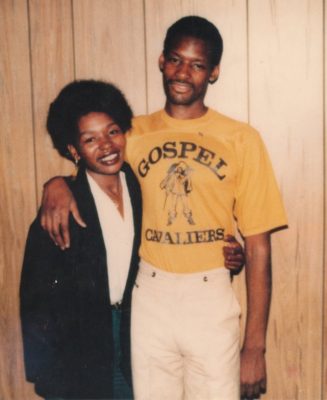
 Despite Attorney Deborah LaBelle’s testimony July 28 that state prosecutors have re-recommended juvenile life without parole for 80 percent of Michigan’s juvenile lifers, on Aug. 3 Judge O’Meara handed down an unexpected ruling. He denied a motion for an injunction preventing further actions by courts until the constitutionality of the state statutes, MCL 769.25 and MCL 769.25a, can be determined. (See links to statutes at end of story.)
Despite Attorney Deborah LaBelle’s testimony July 28 that state prosecutors have re-recommended juvenile life without parole for 80 percent of Michigan’s juvenile lifers, on Aug. 3 Judge O’Meara handed down an unexpected ruling. He denied a motion for an injunction preventing further actions by courts until the constitutionality of the state statutes, MCL 769.25 and MCL 769.25a, can be determined. (See links to statutes at end of story.)






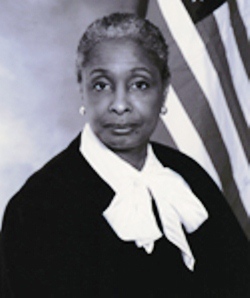

 Davis recently contacted VOD.
Davis recently contacted VOD. “
“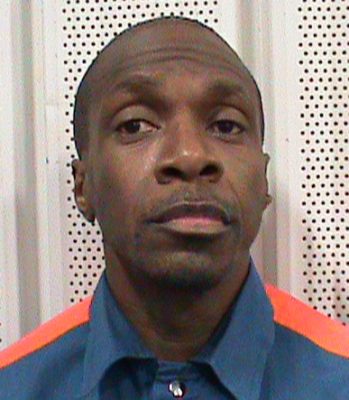




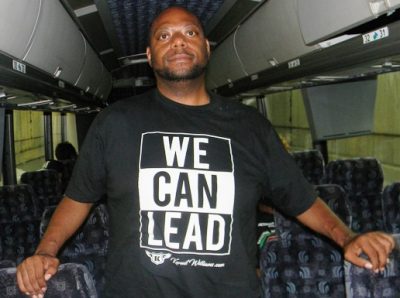




 They are appealing U.S. District Court Judge George Caram Steeh’s ruling of Nov. 19, 2014 in the case. Steeh dismissed eight of nine claims at the state’s request, upholding only the claim based on the Equal Protection Clause of the 14th Amendment, which cited the discriminatory use of Emergency Managers only in Michigan’s majority-Black cities.
They are appealing U.S. District Court Judge George Caram Steeh’s ruling of Nov. 19, 2014 in the case. Steeh dismissed eight of nine claims at the state’s request, upholding only the claim based on the Equal Protection Clause of the 14th Amendment, which cited the discriminatory use of Emergency Managers only in Michigan’s majority-Black cities.





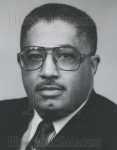










 After Montgomery, many of the state’s juvenile lifers who contacted VOD were so filled with hope that they began having friends and family members find jobs, education and housing for them, thinking their release was only months away.
After Montgomery, many of the state’s juvenile lifers who contacted VOD were so filled with hope that they began having friends and family members find jobs, education and housing for them, thinking their release was only months away.
 Instead, he said he will seek sentences between 20 and 35 years to life, depending on the age and nature of the crime. Two juvenile lifers, Tyrone Jones, now 59, and Henry Smolarski, now 53, both convicted in 1975, have now been re-sentenced accordingly and are eligible for parole, having served the maximum time.
Instead, he said he will seek sentences between 20 and 35 years to life, depending on the age and nature of the crime. Two juvenile lifers, Tyrone Jones, now 59, and Henry Smolarski, now 53, both convicted in 1975, have now been re-sentenced accordingly and are eligible for parole, having served the maximum time.



 Paul O’Neal aka Paull Oneal is a resident of
Paul O’Neal aka Paull Oneal is a resident of 
 Many are criticizing the
Many are criticizing the 






 Michigan has the second highest number of juvenile lifers in the nation, and was one of only four states, in addition to Louisiana, New York, and Pennsylvania, to hold out until the Montgomery ruling, claiming that Miller was not retroactive.
Michigan has the second highest number of juvenile lifers in the nation, and was one of only four states, in addition to Louisiana, New York, and Pennsylvania, to hold out until the Montgomery ruling, claiming that Miller was not retroactive.


 Judge Corbett O’Meara earlier granted an immediate temporary restraining order (TRO) against state prosecutors. Michigan appealed, and the Sixth Circuit Court of Appeals ruled Judge Corbett O’Meara did not have the power to issue a TRO in this situation but could move forward with proceedings on the motion for an injunction.
Judge Corbett O’Meara earlier granted an immediate temporary restraining order (TRO) against state prosecutors. Michigan appealed, and the Sixth Circuit Court of Appeals ruled Judge Corbett O’Meara did not have the power to issue a TRO in this situation but could move forward with proceedings on the motion for an injunction.





